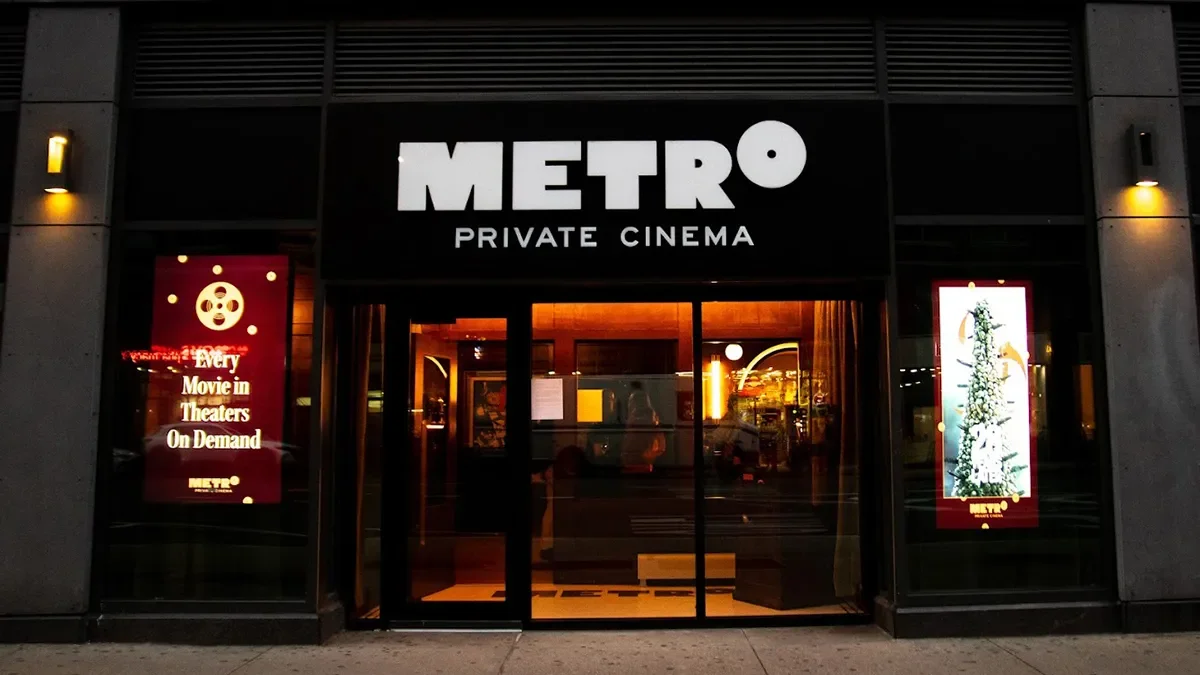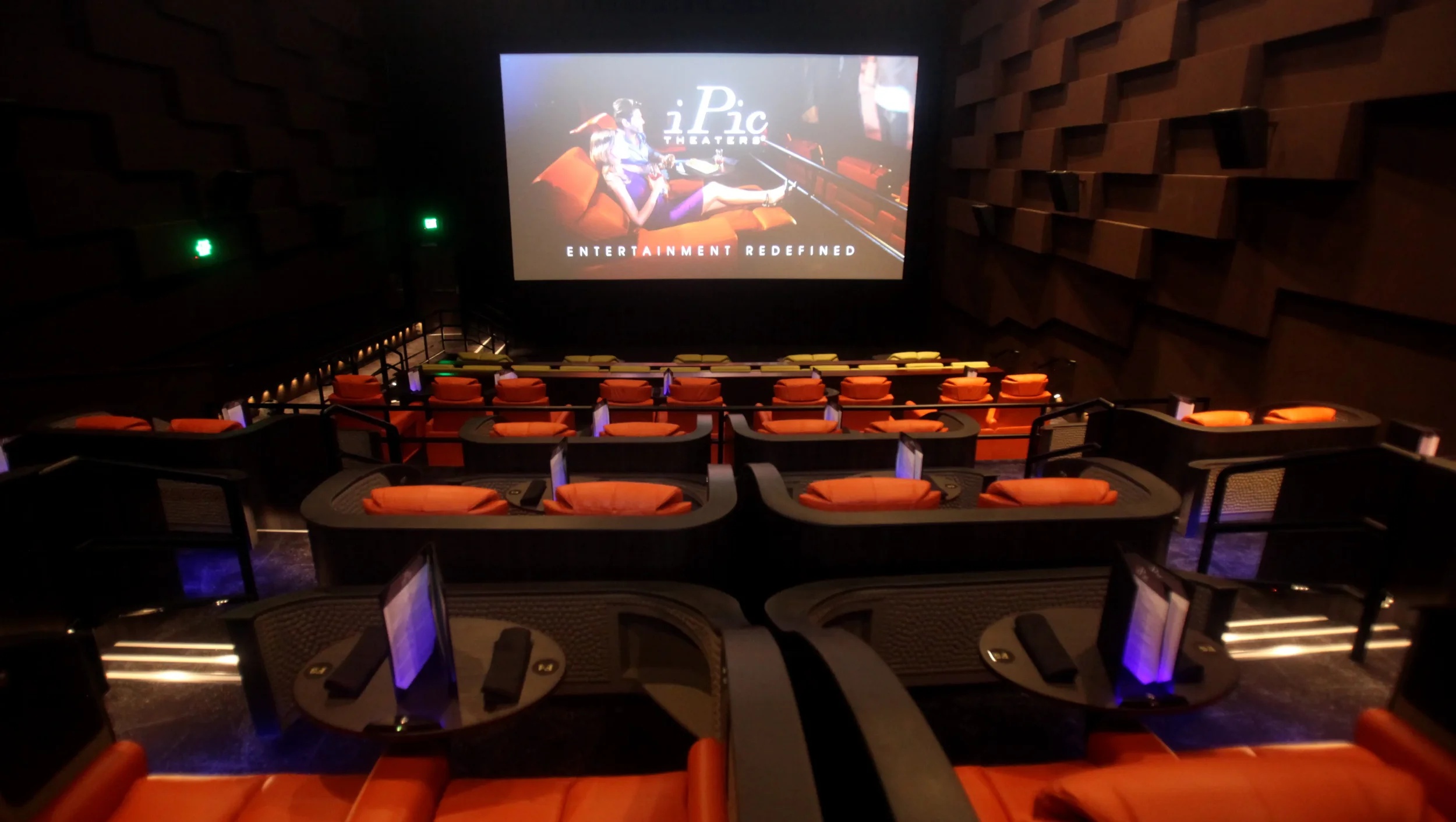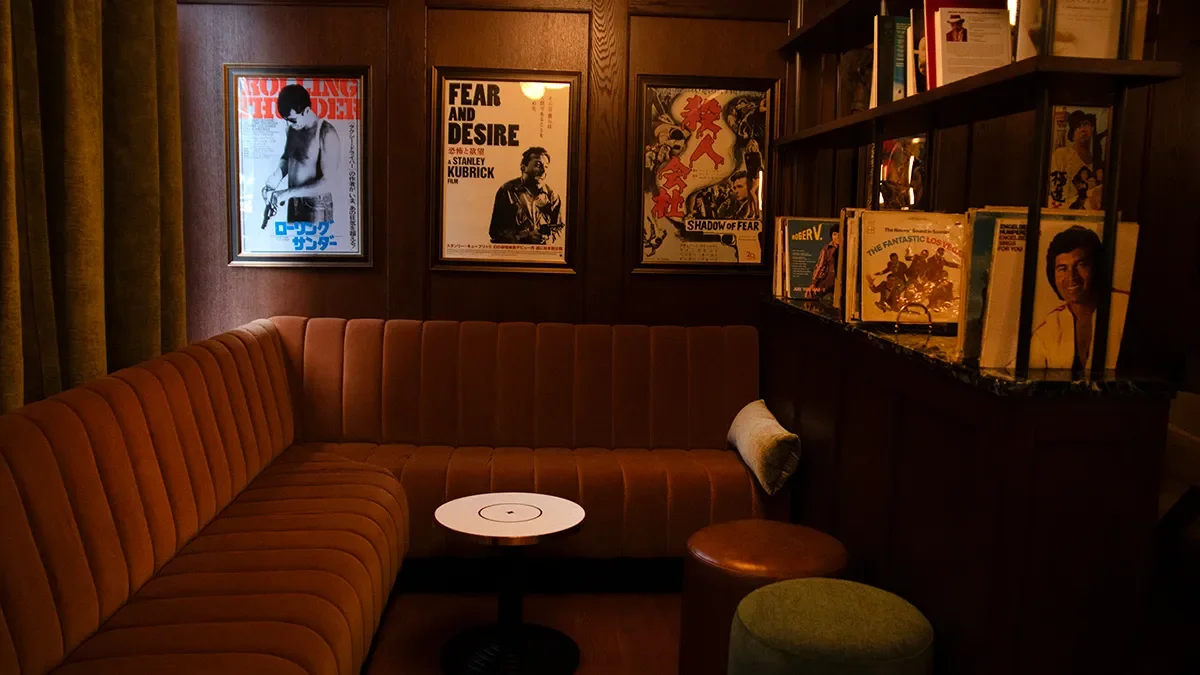Metro Cinema Aims to Redefine Luxury Moviegoing in New York — But So Did iPic, Look, and Now Soho House. What’s the Real Plan, and Can It Actually Work?
Metro Private Cinema is located in Chelsea. - Metro Private Cinema
A new Chelsea theater is promising to reinvent the luxury movie experience — but history says it’s harder than it looks.
I’ve been watching movies in New York City my whole life, and not just at the usual multiplexes. I’ve clocked hours at the Angelika, IFC Center, Film Forum, Metrograph, Nitehawk, and even the occasional AMC Lincoln Square IMAX when I want spectacle the way God intended. I’ve sat in the front row at Regal Union Square, bought tickets to one-night-only indie screenings in church basements, and shown up to repertory houses where the popcorn machine feels as old as the projector. And in all that time, I’ve watched the same pitch cycle through the city every few years: someone decides they’ve cracked the code on “reinventing” the moviegoing experience. They talk about elevated hospitality, curated food and drink, plush seating, private spaces, and—my personal favorite phrase—“an escape from the ordinary.”
A proud New Yorker will tell you — sometimes with a hint of smugness — that we don’t need anyone swooping in to tell us how to “elevate” our entertainment options. From the Angelika to IFC, from Lincoln Square’s grand ol IMAX screen to Regal Union Square’s Beautifully renovated venue offering dependable blockbuster runs, our cinematic ecosystem is already sprawling and eclectic. So when a new player arrives in town promising to “redefine” luxury moviegoing, my first reaction is curiosity, then skepticism, and finally, but still almost immediately by déjà vu. Because I’ve seen this story before — and in Manhattan, it rarely has a happy ending.
The Ghosts of Luxury Theaters Past
Metro Private Cinema is located in Chelsea. - Metro Private Cinema
I remember when iPic opened its first New York outpost on 57th Street and the West Side Highway. The location was an interesting choice — culturally relevant thanks to Terminal 5 across the street and Pier 94 just down the block (ironically now gone, soon to be replaced by Sunset Studios bringing Hollywood to the Hudson). Still, iPic was a bold idea. People were still going to the movies, but they were tired of the same stiff seats, stale snacks, and the cookie-cutter theater experience that hadn’t evolved much since the ’90s.
As any fresh concept aiming to “reinvent” a cemented business model would, they came in hot: leather recliners, in-seat gourmet dining, craft cocktails, and a service model that blurred the line between cinema and supper club. It was a perfect pitch for a certain kind of moviegoer — the type who might otherwise spend Saturday night at a high-end sushi omakase while catching an opening-weekend release. The marketing leaned heavily toward couples, with blanket seating, pillows, and a dedicated server for each pair. On my first visit, I was sold — so much so that I didn’t immediately clock the exorbitant price point. But it became clear quickly: this was essentially the movie theater version of putting lipstick on a pig.
For a time, it worked. The food was genuinely good, the cocktails inventive, and the seats? Pure comfort. But then came the math: $40 for a ticket, $60 for two, and another $100 for “dinner” and drinks. And this was 2015 Midtown West — even today’s West Village crowd, theoretically the sweet spot for this kind of experience, would hesitate to drop that much on a movie night.
Other iterations tried to replicate the model, and some managed to last longer than they probably should have. The final blow came with COVID: theaters shuttered, streaming exploded, and iPic never recovered. Within a year of the pandemic’s start, they were bankrupt. The 57th Street location eventually reopened as Look Dine-In Cinemas, backed by Showcase Cinemas — a giant in suburban multiplexes. But in New York, even with big studio releases every weekend, the premium dine-in model has barely limped along.
It’s not that New Yorkers reject luxury — far from it. We embrace it when it feels authentic and worth the price. But time and again, these “premium” theaters find that our moviegoing habits are stubbornly resistant to being dressed up as fine dining. Or, if they do catch on, the novelty rarely lasts more than six months before the food quality slips, the special appetizer becomes indistinguishable from a freezer-to-fryer plate, and the magic is gone.
The Boldness — and Risk — of Metro’s Model
Metro Private Cinema is located in Chelsea. - Metro Private Cinema
Now comes Metro Cinema in Chelsea, helmed by Alamo Drafthouse founder Tim League. Metro’s not trying to be another multiplex. Instead, it’s a collection of twenty private screening rooms, each available to rent for groups of four to twenty. For a few hours, it’s your room, your film, your menu. The pitch is privacy, exclusivity, and a bespoke experience: Paul Thomas Anderson shows up to check it out, your cocktails arrive silently via “ninja service,” and the menu — designed by chef Joshua Guarneri — might be themed to your movie.
It’s a compelling idea. But it’s also a gamble. Private bookings mean you’re no longer counting on spontaneous ticket sales; you’re banking on planned events: birthdays, corporate outings, small film festival screenings. In theory, that guarantees revenue per session. In practice, it requires an audience willing to pay restaurant-and-event prices for what used to be a $15 night out.
Theatrical releases are already under pressure. Studios are cutting back, streaming platforms hold exclusives, and even IMAX has pivoted toward eventized content to keep the format profitable. For Metro to work, it either needs to push all-in on ultra-exclusive, invitation-only culture (the Cinema Society route) or lean into being a go-to rental hub for a deeply engaged film community — one that, so far, doesn’t exist around it.
When Exclusivity Works — and When It Doesn’t
The Living Room Cinema Club via Instagram
Not all exclusivity is doomed. The Living Room Cinema Club, for instance, operates out of the rooftop of an East Village speakeasy hotel. Their space is donated by the restaurant downstairs in exchange for the drinks revenue. They pop up with screenings of Spring Breakers, Psycho, The Truman Show, The Lighthouse, and City of God, and most recently, the New York premiere of stealing pulp fiction. There’s no corporate marketing blitz, no polished “luxury” label. It’s curated, irregular, and — crucially — fun. People pack in because the vibe is right and the events feel unique.
Then there’s The Cinema Society, the Manhattan institution run by Andrew Saffir. This is pure insider culture: an invite-only network, tied into every major studio, known for glitzy awards-season screenings and afterparties. Their events aren’t open to the public, but they’ve endured for over a decade because they offer something no one else can: proximity to stars, access to Academy voters, and the feeling of being part of a rarefied club. They’re not trying to be a business-first theater; they’re a cultural fixture.
POPULAR ON THE CINEMA GROUP
Metro’s in-between approach — high-end hospitality plus bookable space for the public — is unproven here. And unlike The Cinema Society, they have the overhead of a full-time, physical location in one of the most expensive real estate markets in the world. That means rent, staff, licensing, food and beverage supply, marketing, and constant programming turnover.
Why This Market Is Brutal
Saoirse Ronan attends as Sony Pictures Classics & The Cinema Society host a screening of 'The Outrun' at Crosby Street Hotel on September 30, 2024 in New York City - Getty Images
The Key It Seems Is No Overhead And A True Devotion Towards The Films And The People That Make Them, at least In The Luxury space. As For Theaters As A appointment only Retail/ hospitality Venture, that seems heavily dependent on variables that are historically not reliable nor sustainable in New York. let’s continue to look at ipic as our case study, almost All Of The Spaces the "inventive” theater chain Vacated post chapter 11 all over The City— Have Cycled Through Multiple Luxury Theater Tenants. Landmark, Look, ect Each Promising The Same Things: Comfortable Seating, Craft Drinks, And An Elevated Menu. Each Has Failed, Not Because The Experience Was Bad, But Because Novelty Fades Fast In New York. And the bigger issue for their business model is that theaters adapt the majority of your theaters in New York or anywhere now have reclining seats, clean facilities, increased food, options, and alcohol. So when you're paying Manhattan rent, A Room Full Of Plush Chairs And Artisanal Sliders Isn’t Enough To Keep Customers Coming Back Month After Month. What along enough to profit on top of the money you have to pay a license films.
Even Alamo, which arguably struck the best balance between good food, smart programming, and fair ticket prices, has faced its own reckoning. Workers went on strike last year over low wages and anti-union practices. Theaters run on people who love movies — staff who sneak into screenings on their breaks, who share recommendations at the box office, who create the atmosphere as much as the décor does. Burn them out or underpay them, and even the best-run operation can lose its spark.
Metro’s innovation — making the room itself the commodity — sidesteps some of these challenges, but not all. Pricing is steep, especially in a city where streaming, home projection, and free outdoor screenings compete for attention. And without a built-in membership community, every booking will be a sale that needs to be won from scratch.
The Heart of the Question
Metro Private Cinema is located in Chelsea. - Metro Private Cinema
I’m not rooting for Metro to fail. Quite the opposite: I love movies, I love theaters, and I hate that so many have shuttered or been gutted by corporate cost-cutting. I want New York to have a thriving, varied film culture where you can just as easily catch an Oscar hopeful at Lincoln Square, a midnight cult flick at IFC, or an intimate festival screening at a bespoke venue.
But I also know this city. We’ve been sold this dream before — multiple times. Each iteration learns some lessons from the last, but the core challenge remains: can a luxury theater survive in a market where “luxury” itself has been redefined?
Metro will open its doors soon. The seats will be plush, the cocktails clever, the food Instagram-ready. Paul Thomas Anderson has already stopped by to bless the place. The first weeks will likely be buzzy, booked out by curious locals and industry types. The real test will come months later, when the novelty has worn off and the business model has to stand on its own.
For now, I’ll reserve my seat — and my judgment. Sincerly Hoping They’ve Cracked The Code Of “Theater Reinvention’ Because Despite My Alarmist Rhetoric, New York Needs It And More Than That The Theatrical Industry Does If We Hope To Keep Going To Theaters After Streaming Giants Own Every Studio.



























